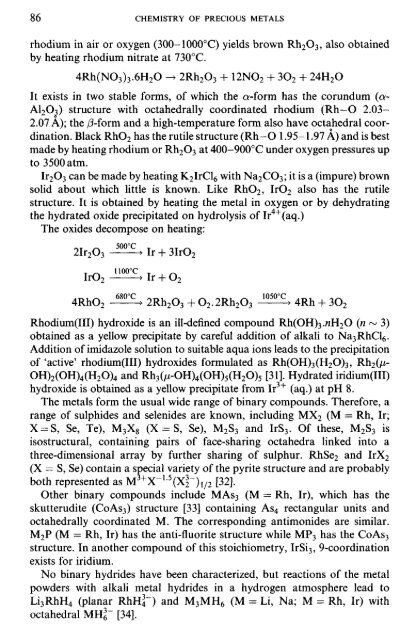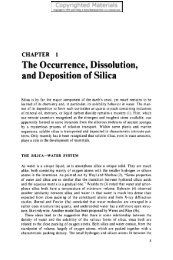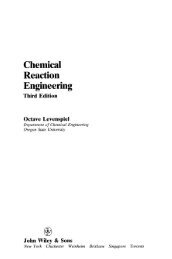Chemistry of Precious Metals - CNTQ
Chemistry of Precious Metals - CNTQ
Chemistry of Precious Metals - CNTQ
You also want an ePaper? Increase the reach of your titles
YUMPU automatically turns print PDFs into web optimized ePapers that Google loves.
hodium in air or oxygen (300-100O 0 C) yields brown Rh2O3, also obtained<br />
by heating rhodium nitrate at 73O 0 C.<br />
4Rh(NO3)3.6H2O -> 2Rh2O3 + 12NO2 + 3O2 + 24H2O<br />
It exists in two stable forms, <strong>of</strong> which the a-form has the corundum (a-<br />
Al2O^) structure with octahedrally coordinated rhodium (Rh-O 2.03-<br />
2.07 A); the /3-form and a high-temperature form also have octahedral coordination.<br />
Black RhO2 has the rutile structure (Rh-O 1.95-1.97 A) and is best<br />
made by heating rhodium or Rh2O3 at 400-90O 0 C under oxygen pressures up<br />
to 3500 atm.<br />
Ir2O3 can be made by heating K2IrCl6 with Na2CO3; it is a (impure) brown<br />
solid about which little is known. Like RhO2, IrO2 also has the rutile<br />
structure. It is obtained by heating the metal in oxygen or by dehydrating<br />
the hydrated oxide precipitated on hydrolysis <strong>of</strong> Ir 4+ (aq.)<br />
The oxides decompose on heating:<br />
SOO 0 P<br />
2Ir2O3 JH!l±-> Ir + 3IrO2<br />
T<br />
IrO2<br />
UOO 0 C<br />
> Ir + O2<br />
4RhO2 Ji^ 2Rh2O3 + O2.2Rh2O3 J!*^ 4Rh + 3O2<br />
Rhodium(III) hydroxide is an ill-defined compound Rh(OH)3 .«H2O (n ~ 3)<br />
obtained as a yellow precipitate by careful addition <strong>of</strong> alkali to Na3RhCl6.<br />
Addition <strong>of</strong> imidazole solution to suitable aqua ions leads to the precipitation<br />
<strong>of</strong> 'active' rhodium(III) hydroxides formulated as Rh(OH)3(H2O)3, Rh2 (^-<br />
OH)2(OH)4(H2O)4 and Rh3(^-OH)4(OH)5(H2O)5 [31]. Hydrated iridium(III)<br />
hydroxide is obtained as a yellow precipitate from Ir 3+ (aq.) at pH 8.<br />
The metals form the usual wide range <strong>of</strong> binary compounds. Therefore, a<br />
range <strong>of</strong> sulphides and selenides are known, including MX2 (M = Rh, Ir;<br />
X-S, Se, Te), M3X8 (X-S, Se), M2S3 and IrS3. Of these, M2S3 is<br />
isostructural, containing pairs <strong>of</strong> face-sharing octahedra linked into a<br />
three-dimensional array by further sharing <strong>of</strong> sulphur. RhSe2 and IrX2<br />
(X = S, Se) contain a special variety <strong>of</strong> the pyrite structure and are probably<br />
both represented as M 3+ X~ L5 (Xi")1/2 [32].<br />
Other binary compounds include MAs3 (M — Rh, Ir), which has the<br />
skutterudite (CoAs3) structure [33] containing As4 rectangular units and<br />
octahedrally coordinated M. The corresponding antimonides are similar.<br />
M2P (M — Rh, Ir) has the anti-fluorite structure while MP3 has the CoAs3<br />
structure. In another compound <strong>of</strong> this stoichiometry, IrSi3, 9-coordination<br />
exists for iridium.<br />
No binary hydrides have been characterized, but reactions <strong>of</strong> the metal<br />
powders with alkali metal hydrides in a hydrogen atmosphere lead to<br />
Li3RhH4 (planar RhH^) and M3MH6 (M = Li, Na; M = Rh, Ir) with<br />
octahedral MH^ [34].







